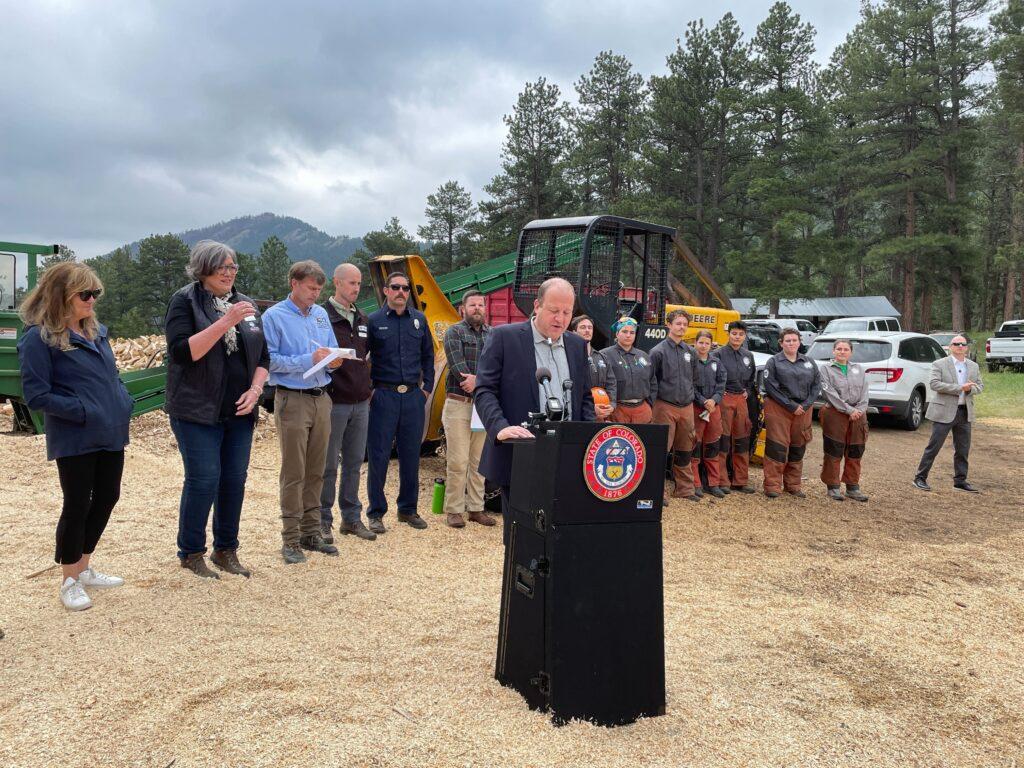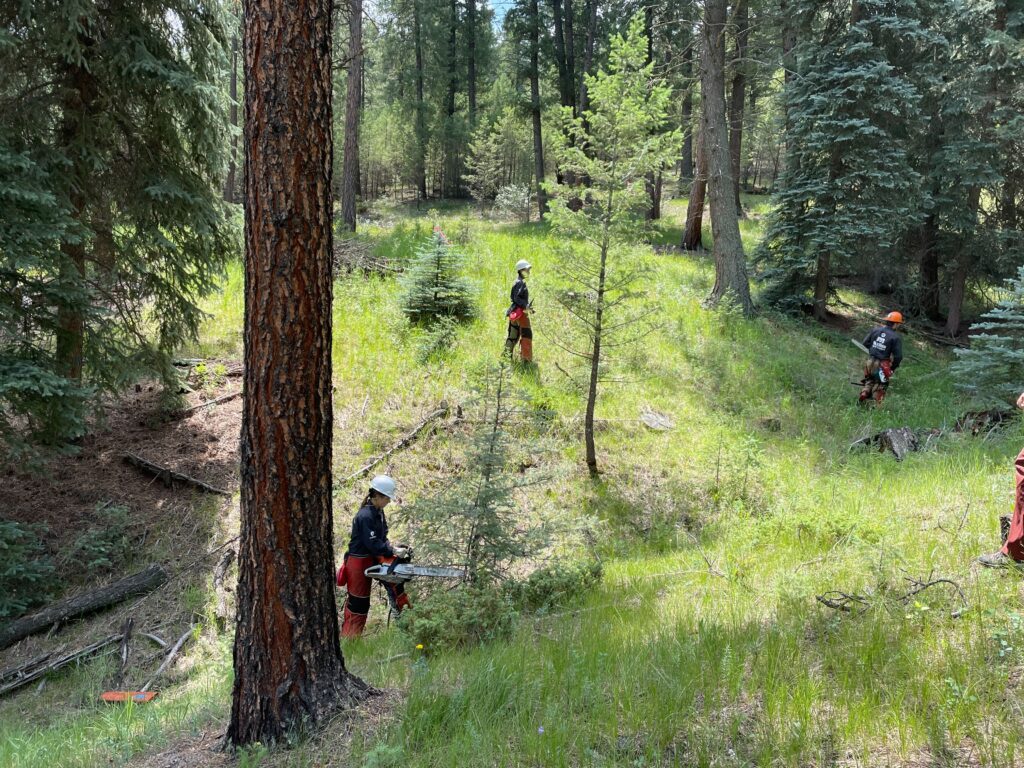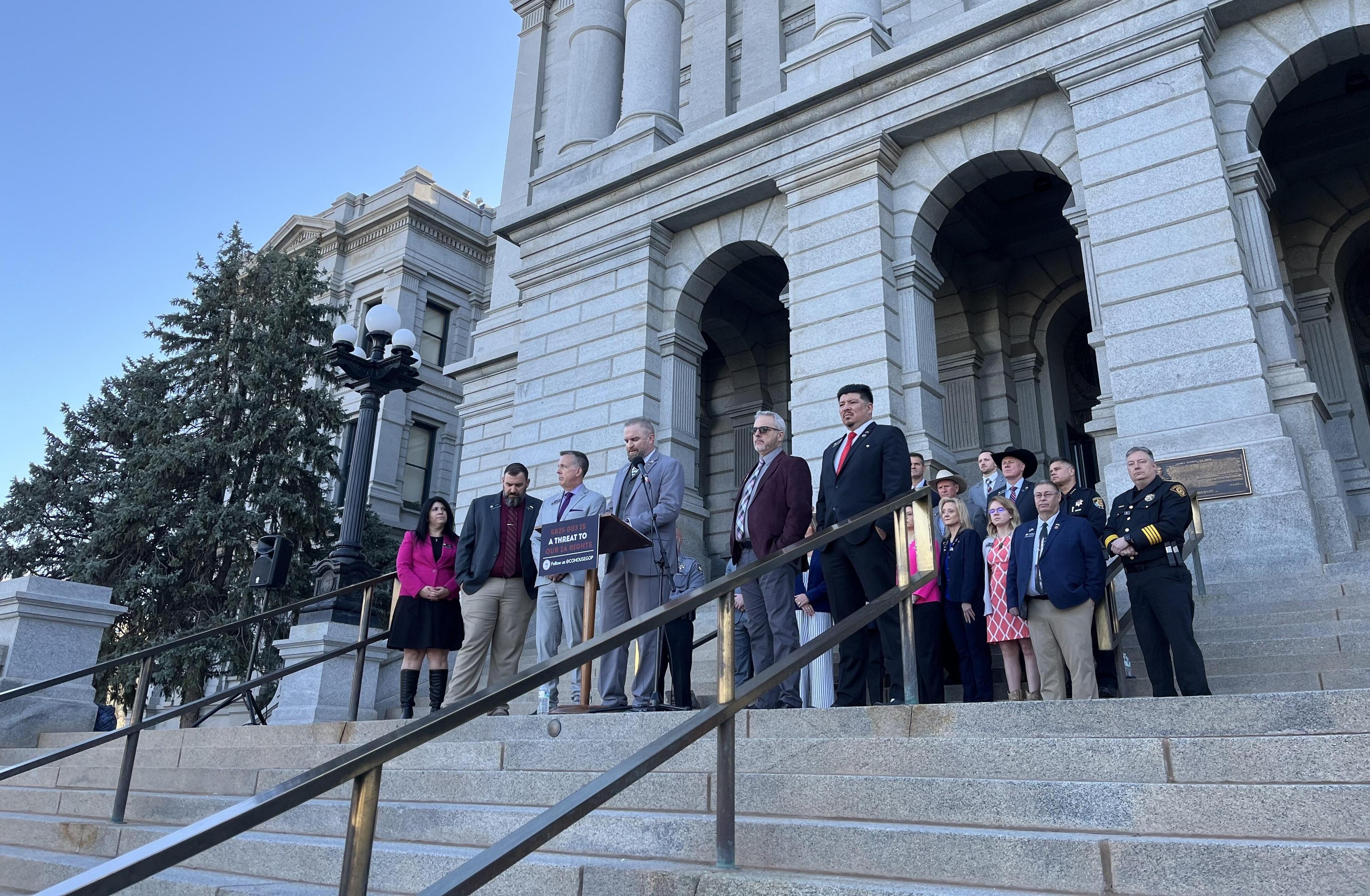
On a 40 acre parcel of private land in Evergreen, an unincorporated area of Jefferson County, Governor Jared Polis presented how his administration has funded fire mitigation projects through the Colorado Strategic Wildfire Action Program, or COSWAP.
The program awards grant money to various groups and counties hoping to decrease the risk of large wildfires. Over $17 million in grants was made available through SB21-258 in 2021, and Polis said the program is even more necessary in light of the destruction Colorado has faced over the last two years.
“We know that that is more important now than ever before. In the summer of 2020, our state experienced the three largest wildfires in the history of our state. And just last December, we experienced the most destructive fire in the history of our state, the Marshall Fire. For Colorado and for the west, this is really the new normal,” Polis said Monday.
Standing to his left was one of the many arms of fire mitigation and conservation in Colorado — members of the Colorado Youth Corps Association.

The nonprofit group has existed since 1997 and currently has more than 2,000 members in eight different corp units. Now, thanks to over $17 million of state funding made available through COSWAP, they will partner with local governments, state agencies and other organizations to help with wildfire mitigation projects across Colorado.
Brandon Watkins, the associate director for the Youth Corps, said the organization develops the next generation of wildland firefighters and first responders.
“These corps members receive valuable industry standard certifications, such as tree falling with chainsaws and firefighting qualifications, to open the door to an impactful career saving lives and livelihoods here in our state and across the country,” Watkins said.

At this particular location in Evergreen, corps members are cutting through trail-free forests to maintain vegetation that could lead to larger and more intense wildfires.
“We're working on removing region. What that means is taking out saplings, otherwise known as baby trees,” said senior crew member Hillary Hiett. “We call them ladder fuels. It's preventing the fires from going into the crowns of the larger trees and keeping 'em at the ground level.”
For many of the 16 to 24-year-olds it recruits, the Youth Corps presents an opportunity to work in conservation without having prior job experience. Evan D’Amore said he feels confident he will find a job thanks to the networking he’s been able to do.
“It's like an extra step in being able to apply the skills that we've learned and the experience we've gained and bringing it into the job,” D’Amore said.
There were 49 projects funded during COSWAP’s initial funding phase. Of those, 17 are being carried out by the Youth Corps. Under the bill that established the grants, the COSWAP program will undergo one last round of funding that will end next summer.









